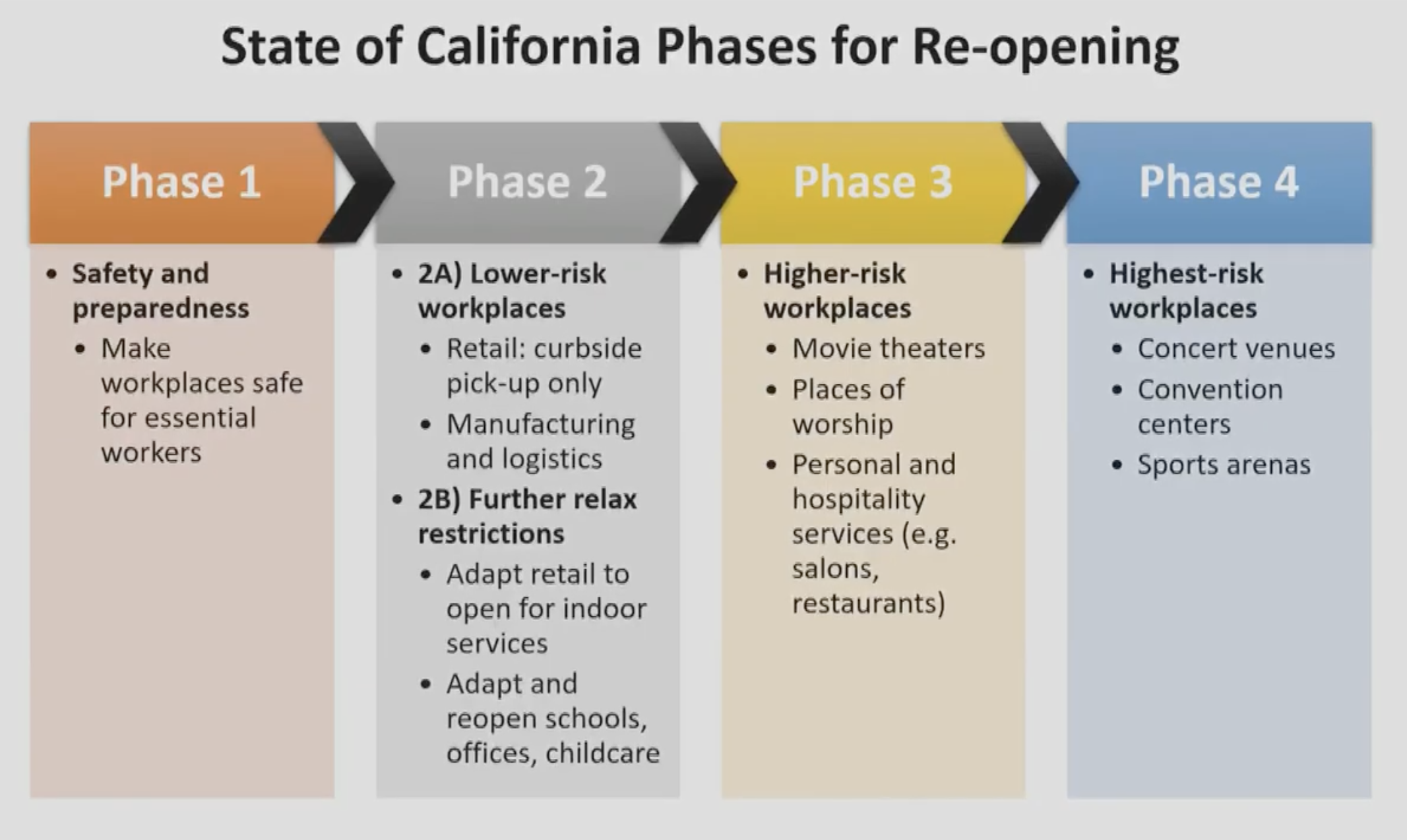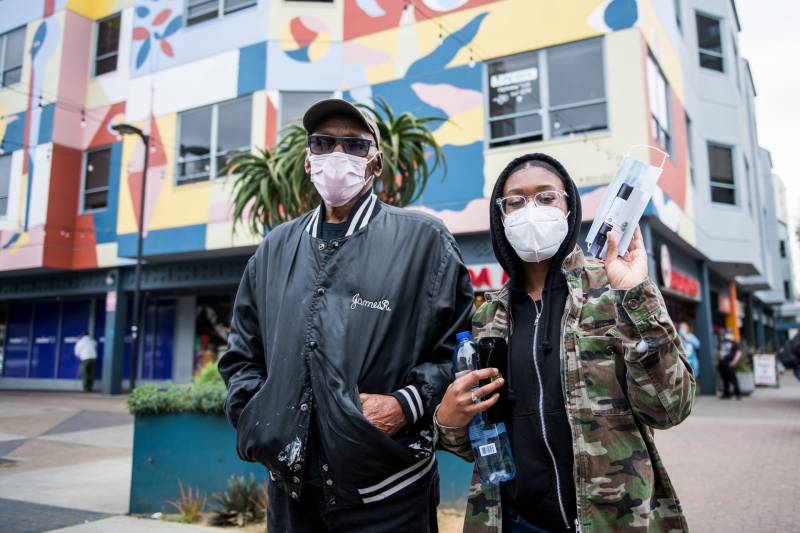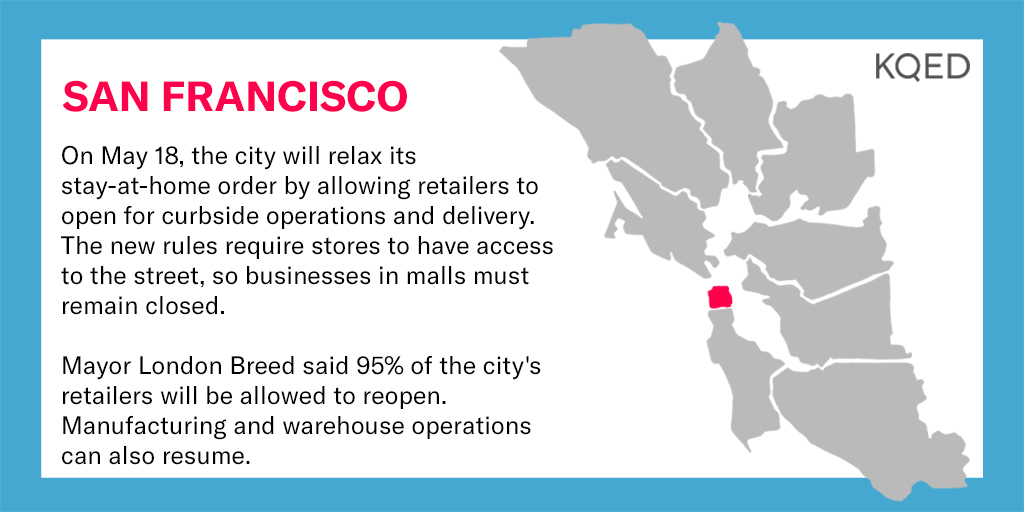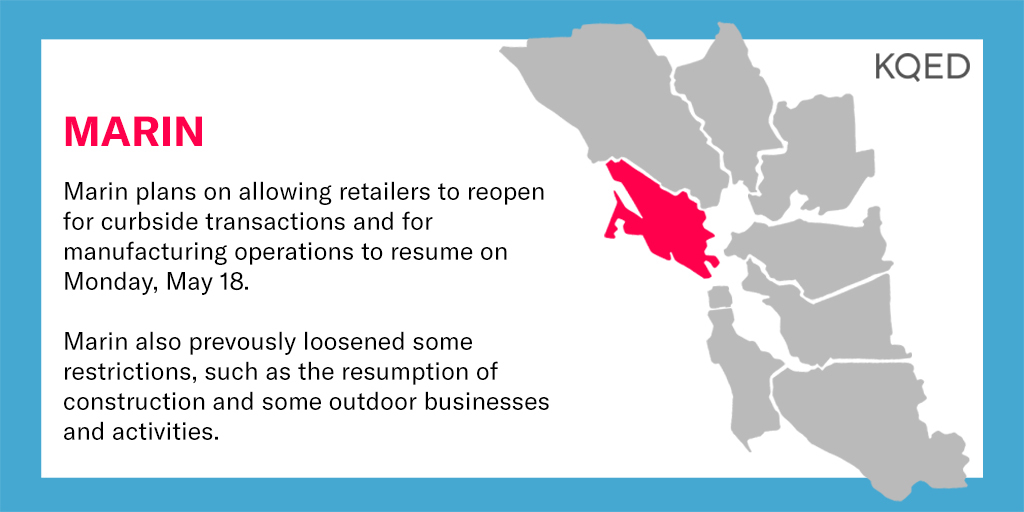Five Bay Area counties and the city of Berkeley announced they are loosening some shelter-in-place restrictions starting Monday, May 18. The city of Berkeley, San Francisco, Alameda, Marin, Contra Costa and Santa Clara counties will now allow retail businesses to operate curbside pickup, and manufacturing and warehouses to resume if they meet detailed guidelines for safe operation.
Public health officials say they’ve been monitoring the number of new cases and hospitalizations since May 4, when they last eased restrictions, and are ready for Phase 2 of Gov. Gavin Newsom’s reopening roadmap. They applaud the many Bay Area residents who are following public health guidelines, which have worked to keep instances of new hospitalizations low. And they recognize the need to begin slowly reopening shuttered businesses.

“We need to do all these different layers to continue to slow this virus,” said Alameda County Interim Health Officer Dr. Erica Pan on KQED’s Forum program. “We also need to slowly resume some things that we think are low risk and that people can do safely.”


